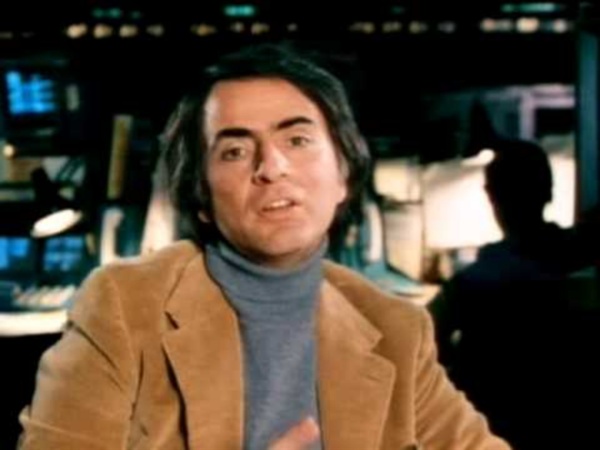



http://www.youtube.com/watch?v=XGK84Poeynk
Related: Scientific SymphonicQuantum nonlocality Quantum nonlocality is the phenomenon by which the measurements made at a microscopic level necessarily refute one or more notions (often referred to as local realism) that are regarded as intuitively true in classical mechanics. Rigorously, quantum nonlocality refers to quantum mechanical predictions of many-system measurement correlations that cannot be simulated by any local hidden variable theory. Many entangled quantum states produce such correlations when measured, as demonstrated by Bell's theorem. Experiments have generally favoured quantum mechanics as a description of nature, over local hidden variable theories.[1][2] Any physical theory that supersedes or replaces quantum theory must make similar experimental predictions and must therefore also be nonlocal in this sense; quantum nonlocality is a property of the universe that is independent of our description of nature.
Planck reveals an almost perfect Universe / Planck / Space Science Cosmic microwave background seen by Planck Planck reveals an almost perfect Universe 21 March 2013 Acquired by ESA’s Planck space telescope, the most detailed map ever created of the cosmic microwave background – the relic radiation from the Big Bang – was released today revealing the existence of features that challenge the foundations of our current understanding of the Universe. The image is based on the initial 15.5 months of data from Planck and is the mission’s first all-sky picture of the oldest light in our Universe, imprinted on the sky when it was just 380 000 years old.
Quantum entanglement Quantum entanglement is a physical phenomenon that occurs when pairs or groups of particles are generated or interact in ways such that the quantum state of each particle cannot be described independently – instead, a quantum state may be given for the system as a whole. Such phenomena were the subject of a 1935 paper by Albert Einstein, Boris Podolsky and Nathan Rosen,[1] describing what came to be known as the EPR paradox, and several papers by Erwin Schrödinger shortly thereafter.[2][3] Einstein and others considered such behavior to be impossible, as it violated the local realist view of causality (Einstein referred to it as "spooky action at a distance"),[4] and argued that the accepted formulation of quantum mechanics must therefore be incomplete. History[edit] However, they did not coin the word entanglement, nor did they generalize the special properties of the state they considered.
Science - Quantum Physics of Consciousness and Physical Reality by StarStuffs We may therefore regard matter as being constituted by the regions of space in which the field is extremely intense...There is no place in this new kind of physics for the field and matter, for the field is the only reality." Albert Einstein, with his general theory of relativity, opened the doors of science along with the mystical realities. Einstein theorized that space and time are intertwined and that matter is inseparable from an ever-present quantum energy field and this is the sole reality underlying all appearances. This theory challenged the basic assumptions about the universe and what it contained. Physicists found that the most basic atomic particles in the cosmos comprise the very fabric of the material universe.
Earth's mantle helps hunt for fifth force of nature Interactions NASAElectrons' spin may give rise to a force that allows particles to interact over very long distances. In general, people tend to use the phrase "force of nature" loosely, as in "she's a real force of nature." But physicists are pickier--they reserve the phrase for just four separate, universal forces they call the "fundamental forces": gravity, electro-magnetism, and the strong and weak nuclear forces, which hold the nucleus together and are involved with radioactive decay, respectively. That doesn't mean physicists rule out the possibility that other forces exist. Since the models they have for explaining everything are incomplete, there's a fairly good chance that there's something else out there, pulling matter apart or pushing it together in a different way than all the forces identified so far. Scientists search for the 'unparticle'
?ref=http%3A%2F%2Ft Sri Lankan-born British mathematician, Chandra Wickramasinghe, discovered that a two-inch wide meteorite that crash landed in a fireball in central Sri Lanka in December was pitted with tiny fossils of algae, similar to the kind found in seaweed. Wickramasinghe, currently Director of the 'Cardiff Centre for Astrobiology', was a student and collaborator of Fred Hoyle. Their joint work on the infrared spectra of interstellar grains led to developing the hypothesis of panspermia that proposes that cosmic dust in the interstellar medium and in comets is partly organic, and that life on Earth was 'seeded' from space. "Is the Cosmos a Vast Computer Simulation?" New Theory May Offer Clues If the cosmos is a numerical simulation, there ought to be clues in the spectrum of high energy cosmic rays. Now more than two thousand years since Plato suggested that our senses provide only a weak reflection of objective reality, experts believe they have solved the riddle using mathetical models known as the lattice QCD approach in an attempt to recreate - on a theoretical level - a simulated reality. Lattice QCD is a complex approach that that looks at how particles known as quarks and gluons relate in three dimensions. "We consider ourselves on some level universe simulators because we calculate the interactions of particles by basically replacing space and time by a grid and putting it in a box," said Beane.
Doomed Spacecraft Captures Awesome Close-Up Video of Moon Three days before the moon-orbiting Ebb spacecraft collided with a lunar mountain, its on-board cameras captured some striking images of the pockmarked moon’s northern hemisphere — from just six miles up. On Jan. 10, NASA released what look like scenes from a science fiction movie: two probe’s-eye views of the lunar farside, made from Ebb’s stitched-together images. The clips are played six times faster than the spacecraft’s flyover actually occurred. The first was shot by the forward-facing MoonKAM, and the second was taken by a rear-facing camera.